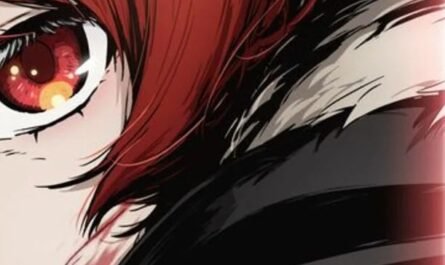“Terminator 0” will be exclusively distributed worldwide on Netflix from Thursday, August 29th, “Judgment Day.” This science fiction action film set in Japan in 1997 is the first animated work in the “Terminator” series.
The story is set in Japan in 1997. The story centers around a scientist’s family.
The story centers around a family living in Japan in 1997. Malcolm Lee, a scientist who works with artificial intelligence (AI), his three children, and Misaki, a housekeeper who looks after the children in place of Malcolm, who is busy with his schedule. Malcolm repeatedly dreams of a future in which machines overrun humans (the threat of Skynet, which is expected in the film series), and he is so busy trying to devise measures to prevent it that he neglects his children. Then, a Terminator attacks Malcolm’s children, mercilessly killing the police officers who get in their way. A warrior named Eiko, sent from the future to change their fate, joins the story, and a new story about parents and children, humans and machines, the past and the future begins.
At first glance, this work has a somewhat “Neon Genesis Evangelion” atmosphere. The animation style is classic, and it seems to be a work that puts “Japanese anime-ness” at the forefront, as Japan’s Production IG produces the animation. However, the more one follows the story, the more one realizes that it is an ambitious work that, while using the stories that the Terminator series has woven so far as its backdrop, also attempts to present new themes.
Taking advantage of the anime series format to explore themes
The Terminator series’ common theme and appeal is its depiction of “confronting fate” and “machine and human emotions.” Terminator 0 takes these elements as its axis and confronts them head-on in a new way. What was impressive about this film was that it took advantage of the length of the animated series to create a conversation scene in which the reasons and goals for confronting fate, which had not been specifically verbalized in the Terminator series so far, were spoken in words.
The word “fate,” which has been used extensively in both the film series and this film, was rejected from a realist and existentialist perspective, and the film portrayed “humanity” through Malcolm’s efforts to change the future. A critical element in depicting “humanity” was how it handled the future and the past. It was clearly stated that this film was not based on the “Back to the Future” method of “changing the past changes the future,” but on the “Avengers: Endgame” method of “going back to the past creates a new future.” Knowing this, Eiko returns to the past and throws herself into the fight.
Through her story, we see the “humanity” of fighting to create a new future (=hope) even when we know the future cannot be changed. By depicting Malcolm and Eiko’s struggles, the value of qualities only humans possess and machines do not, such as a sense of justice, mission, and hope, is redefined. This is where the significance of this work being produced as an anime series comes in.











